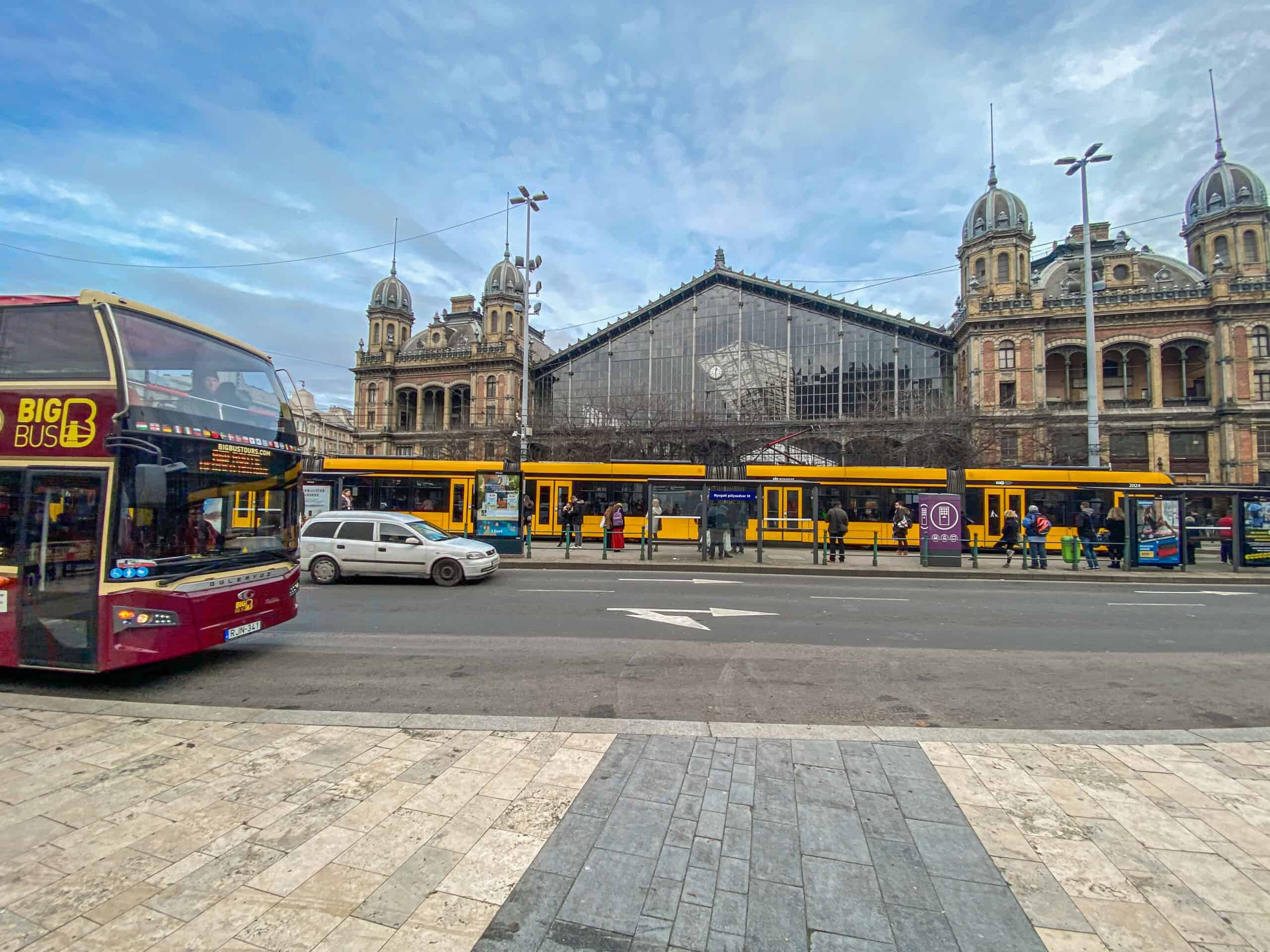Main railway stations of Budapest

Main railway stations of Budapest
Learn about the main railway stations of Budapest, and popular destinations you can reach by train from the capital of Hungary.
Budapest, the capital of Hungary, has three main train stations (“pályaudvars” as we call them) to serve the needs of domestic and international travelers: Keleti, Nyugati, and Déli railway stations. Although the state of the trains and the reliability of MÁV (Hungary’s state-owned railway services) are often disputed and criticized by citizens, rail transport continues to be a popular choice of travel for both locals and tourists, and it would be unfair to say that the situation hasn’t improved in the past decade. In fact, most of the worn-out, nostalgia-evoking (and infamously inconvenient) trains have been swapped for modern ones on several major service lines (mainly within the capital’s agglomeration but also to some of the most popular travel destinations), and a few years ago, MÁV implemented a long-awaited digital ticket-purchasing solution which is available for smartphones as well.

East, west… where’s the rest?
For those planning to visit Budapest, there might come a time (if it hasn’t yet), that you’ll notice the naming convention of Budapest railway stations is somewhat confusing: it appears logical and outright helpful at first, but as you dig into the routes and destinations, it’ll start making less and less sense by the minute. Let us spare you the headache that even a lot of city dwellers experienced at some point and clarify: even though the names of the three main stations mean Eastern, Western, and Southern, they do not describe where in the city the stations are located. Instead, the city’s first train station, Déli pályaudvar, was named after its owner, the Déli Vaspályatársaság (Austrian Southern Railway Company), whose name denoted the direction towards which they operated train services; and after that, each station got its name from the direction it dispatched trains to. Nevertheless, you won’t find a railway station called “Északi” (Hungarian for “northern”), even though there are plenty of northbound railway services from Budapest – only they depart from the Nyugati or Keleti railway stations. Although this direction-based distribution is no longer strictly in place, the train stations have kept their names to this day.

Keleti railway station (Keleti pályaudvar)
Before aviation took over as the preferred means of international transport, when the railroad industry was booming, passengers arriving in the city were greeted by railway stations. For that reason, they were designed to fill incoming travelers with awe. Being a city often praised for its stunning, diverse architecture, Budapest does not fall short of impressive railway stations either – and Keleti pályaudvar is a prime example of that.
Built in 1884 on Baross square, Budapest Keleti train station was considered the most modern train station of Europe at the time. Today, it is the main international and intercity railway terminal of Budapest and is therefore the busiest of the city’s main railway stations; trains depart from here to nearly all of Hungary, as well as Austria, Germany, Slovakia, the Czech Republic, Romania, Croatia and Serbia.
Location: Keleti railway station
How to get here: Keleti pályaudvar has two direct metro line connections, M2 and M4, making it easily accessible from anywhere in the city. There are also numerous bus and tram services that stop or terminate at Keleti.

Nyugati railway station (Nyugati pályaudvar)
Although the competition is tough between the Nyugati and Keleti railway stations, when we look at their appearance, Budapest Nyugati station probably takes the cake. Station building is designed by August de Serres and built by Gustave Eiffel’s company, the iron and glass structure of the terminal’s façade leaves millions of tourists breathless to this day. To top it all off, right next to the station is a lovely little park called Eiffel tér, offering people a selection of bars and restaurants, as well as the chance to sit and relax in a pretty green area in an otherwise traffic-heavy location.
The station provides railway services to multiple cities and regions northbound, such as Esztergom, Veresegyház, and the Danube Bend, but also in other directions throughout the country, such as Cegléd, Szeged, and Nyíregyháza.
Location: Nyugati railway station
How to get here: Nyugati pályaudvar has a direct metro connection on line M3 which runs across Budapest vertically, and is also on the line of tram 4-6, making it easily accessible from both Buda and anywhere in central Pest.

Déli railway station (Déli pályaudvar)
Station opened in 1861, Déli pályaudvar was the first main railway station of the country. Sadly, the terminal suffered significant damage during WWII and had to be rebuilt almost from scratch, which is why its façade looks more “modern” than those of the other two main train stations.
Déli is the second busiest railway station after Keleti. The station primarily serves the southern areas of the Budapest agglomeration, as well as cities in Transdanubia. In the summer, the number of passengers rises dramatically, as Déli is the number one railway station serving the Balaton region, which is a popular holiday destination for Hungarians and tourists alike.
Location: Déli railway station
How to get here: Located on the Buda side of town, Déli pályaudvar is one of the stops of metro line M2. It can also be reached by several tram and bus services that run across Buda.

Train tickets
Buying train tickets in Hungary is straightforward and tourist-friendly. You can purchase tickets at the station from counters or automated machines, but the easiest method is through the official MÁV app or website, which offers English language support and often includes discounts for early bookings. Most domestic and international trains offer seat reservations, which are recommended—especially for long-distance or peak-time travel. Tickets must be validated before boarding regional trains, while for intercity and international services, conductors check them onboard. Always carry a printed or digital copy of your ticket and a valid ID for international journeys.

FAQ
What are the main railway stations in Budapest?
The main railway stations in Budapest are primarily three: Budapest Keleti, Budapest Nyugati, and Kelenföld. Each of these train stations serves a unique purpose and connects different parts of Hungary and neighboring countries. Budapest Keleti is known for its international services, while Budapest Nyugati is famous for its architectural beauty and domestic routes. Kelenföld serves mainly local and suburban traffic.
How do I get to Keleti Railway Station?
Keleti Railway Station, or Keleti pályaudvar, is easily accessible from various parts of the city. The metro station adjacent to Keleti is on the M2 line, making it simple for travelers to reach the station from the city center. Additionally, several tram lines and buses also connect to this train station, providing convenient access for passengers.
What services are available at Budapest’s main train stations?
The main train stations in Budapest offer a variety of services to ensure a comfortable travel experience. At Budapest Keleti, you can find ticket counters for purchasing train tickets, waiting areas, shops, and restaurants. Budapest Nyugati also features similar amenities, along with beautiful historical architecture. Kelenföld is more modern and has fewer services, focusing primarily on commuter traffic.
When was Budapest Keleti Railway Station built?
Budapest Keleti Railway Station was inaugurated in 1884 and has since been a significant hub for railway travel in Hungary. The station showcases stunning architecture and serves as a point of departure for many international and domestic trains. Its historical significance and beautiful design make it a must-see for visitors.
Are there any international trains departing from Budapest Nyugati?
Yes, Budapest Nyugati serves a number of international routes, although it is primarily known for domestic travel. Passengers can catch trains to destinations in nearby countries, including services to Austria and Slovakia. For more extensive international travel, Budapest Keleti is the primary hub, but Nyugati also offers select international services, including trains to Vienna, Bratislava, and Prague.

More interesting and useful tips
If you are interested in the methods of getting to the city from the airport, we recommend reading this article about the Budapest airport transfer choices.
Parking Budapest – check out our article on this topic to avoid fines and find the best parking spots, even for free.





